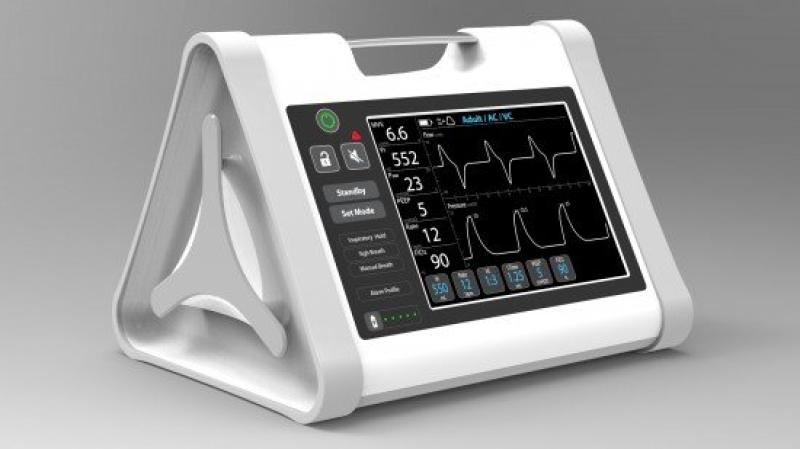We need more ventilators. Here’s what it will take to get them
By: James Temple -- MIT Review


There isn't going to be 30,000 ventilators for New York. Politicians want the Federal government to wave a magic wand, spend whatever it takes, and get it done. But that isn't reality.
Focusing attention on ventilator producers is short sighted. What would be required is increasing the capacity of the entire supply chain. Everything begins with a hole in the ground.

As a Stanford postdoc a decade ago, Matt Callaghan created the designs for a streamlined, low-cost ventilator that hospitals could stockpile, to prepare for the possibility of a global pandemic.
But when he went on to cofound a company, One Breath , he and colleagues determined that the immediate need was producing cheaper ventilators for critical care in the developing world, where chronic respiratory illnesses are among the leading causes of death.
The company raised several million dollars, set up manufacturing in Southeast Asia, and finally expected to begin production for its initial markets within the next 12 months.
But as the very sort of outbreak Callaghan originally had in mind takes hold, One Breath is now exploring whether it can rapidly retool to meet the acute needs of regions overwhelmed by the coronavirus, including the US. To begin manufacturing devices suited for an escalating pandemic—which require different standards, features, and batteries—Callaghan says they would need to raise additional funds, lock in contracts, and secure fast-track regulatory approvals from the US Food and Drug Administration and other authorities.
Even with that support, the best-case scenario is that production for US hospitals would start about 11 months from now. That “makes us a second-wave solution when you’re looking at the current outbreak,” says Callaghan, who is now chief medical officer of the Palo Alto startup and an adjunct surgery professor at Stanford.
Mechanical ventilators are essential for those suffering severe cases of Covid-19, ensuring that patients can continue to breathe when their lungs fail. Health systems in regions where the coronavirus has already spread widely, including parts of China, Iran, and Italy, have struggled to provide necessary care as critical cases outstripped supplies of the machines. The US could soon face similar constraints. As of last month, the nation had around 170,000 ventilators that could be immediately put into service—a fraction of what might be required in severe scenarios, according to earlier studies .
That One Breath took a decade to get to the point of manufacturing ventilators at all, and would need nearly another year to begin production for US hospitals, highlights the obstacles companies will face in seeking to address the critical shortage of these machines.
Medical device manufacturing is highly regulated, depends on proprietary global supply chains, and requires significant expertise to ramp up and run. It’s absolutely critical, of course, that the machines function safely. So the suggestion of some politicians that UK car makers or other major manufacturers could swing into action and save the day is almost certainly over-optimistic.
Even existing ventilator manufacturers with deep experience and approvals in hand still face crucial limits in ramping up production. Constraints include the size of manufacturing plants and the availability of critical components, many of which originate in China.
Adding factory capacity also costs a lot of money up front, creating real risks for these businesses, since it’s possible hospitals won’t need as many ventilators as the worst-case scenarios suggest.
“Who will pay for all the extra ventilators even if the company can ramp up?” said Kenneth Lutchen, dean of Boston University’s College of Engineering and a professor of biomedical engineering, who is focused on developing safer mechanical ventilators , in an email. “Presumably at some point this crisis will play itself out and the hospitals will have far more ventilators than they need until the next crisis.”
“There needs to be an incentivized business model to hit the go button for ramping up manufacturing, and government likely needs to figure out how to successfully engage,” he added.
People in the business also assert that governments need to step in to provide the necessary certainty for companies to accelerate production.
Chris Kiple, chief executive of the Washington-based ventilator company Ventec Life Systems, said in an article published by Forbes on Sunday that they could boost production five-fold over the next three to six months. But he stressed that they’d need the contracts to do so. And while orders have spiked in China, Italy, and Germany, it hasn’t happened yet in the US.
That may soon change. During his press conference on Wednesday, President Donald Trump said he would invoke the Defense Production Act of 1950 to boost manufacturing of critical medical supplies. That act, passed during the Korean War, grants the president broad powers to direct businesses to produce specific goods that are critical to the national defense.
Major manufacturers, including GE Healthcare and Medtronic, have said they’re making efforts to step up production or distribution of ventilators, but they haven’t yet provided any details on volume or timing.
“GE has robust business continuity plans, and we are increasing our manufacturing capacity and output of equipment that is important in the diagnosis and treatment of Covid-19 patients, all while ensuring safe operations,” the company said in a statement to MIT Technology Review.
But amid the rising fears over coming shortages, others are already making contingency plans: do-it-yourselfers are developing their own machines and sharing designs online, while some hospitals are testing out ways of rigging respirators to enable more than one patient to use them at a time.


The pandemic will be over before the capacity of the supply chain can be expanded to meet political demands. Manufacturing doesn't run on magic. And the supply chain is global. A single government, even the Federal government, cannot overcome the international dispersion of production capacity.
The response of the United States to the global pandemic depends entirely upon the weakest link in the supply chain. And the weakest link isn't located in the United States.
I would think CPAP and BiPAP machines could be converted to a basic ventilator with the addition of a regulator. CPAP and BiPAP machines supply a constant air pressure to open airways. A ventilator cycles between positive and negative pressure to assist inhalation and exhalation. Seems to me the only thing that would be needed is a regulator to cycle air pressure.
Of course, there wouldn't be a monitor for vitals. That would need to be done the old fashioned way.